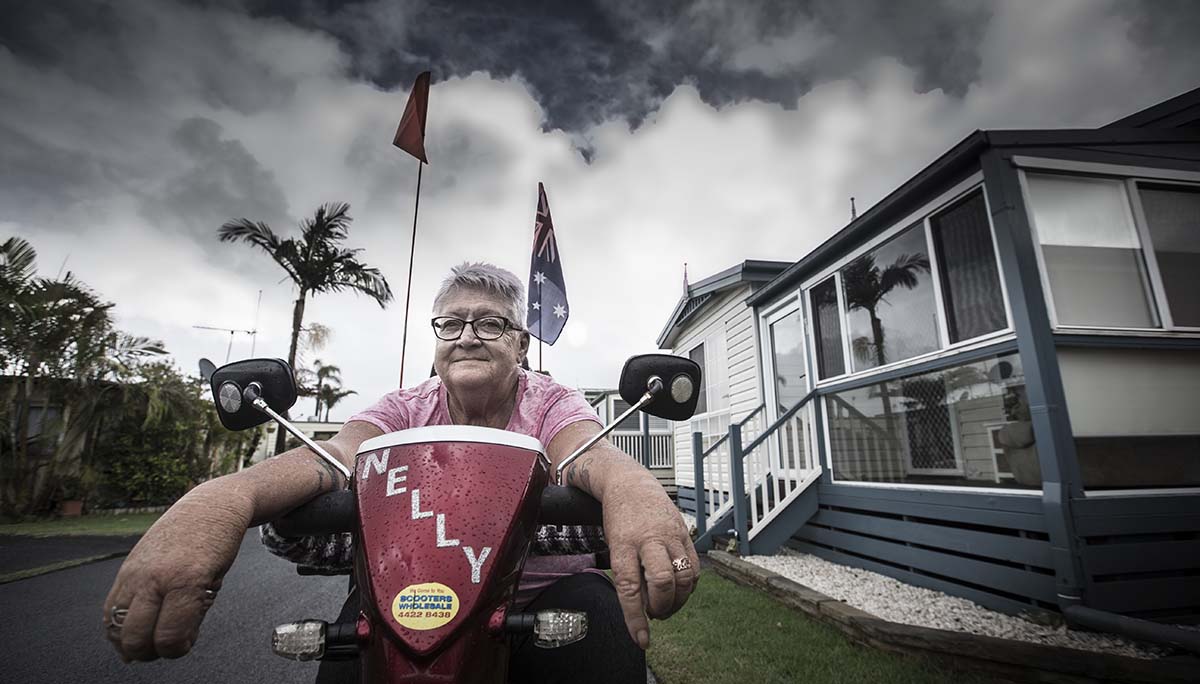October 13, 2017
Don’t ignore the mobility scooter. It may just be the future of transport
Nationals senator John Williams wants to limit the speed of mobility scooters.
Thomas Birtchnell, University of Wollongong; Gordon Waitt, University of Wollongong, and Theresa Harada, University of Wollongong
His campaign shines a spotlight on an often overlooked piece of technology, one that could offer lessons for our transport future.
A mobility scooter is a single-person electric vehicle with three or four wheels, for use in pedestrian areas, often by older people or those with disabilities. But they are more than just outdoor wheelchairs. They’re one of the only purely electric vehicles in widespread use throughout Australia.
Read More: Jobs, tax and politics: three ways electric vehicles will change our world
According to the mobility scooter usage and safety survey report in 2012, 13 in 1,000 Australian adults use them – that’s about 231,000 people.
Our initial research on mobility scooters examines their role as a transport alternative, as well as their legal and functional ability to operate on both road and footpath.
As governments around the world commit to electric vehicles, they will need to come to terms with a range of alternatives to the traditional four-seater, long-range, large-footprint automobile. The mobility scooter offers a vision of what this future might hold.
Talking about a (transport) revolution
Are mobility scooters harbingers of a future where small and versatile electric vehicles roam our cities?
General Motors, for one, has advertised a vision that includes small single- or dual-occupant electric city cars. They could network with the smart city, platoon together in groups, charge while waiting at the lights, or even attach to a train or bus similar to a bicycle.
So how do we get to this future? Those with any current experience of mobility scooters will know the experience is far from seamless, smart or integrated.
Mobility scooters operate in contested spaces, with many infrastructural and legislative oversights – dangerous driveways, nature strips and poor footpath maintenance – that make the streets unsafe or challenging to negotiate.
Our cities were built with large petrol-fuelled cars in mind, but this needs to change, and the experiences of mobility scooter users show us how.
The road, or footpath, ahead
As this video of a mobility scooter user shows, sidewalk obstacles mean they often have no other option but to use the road.
Our research with mobility scooter users suggests they adapt to these difficulties in three key ways:
-
Improvisation: due to infrastructural oversights – no lifts at train stations, for example – users need to rely on their own strategies to plan and make journeys. In some cases, this means they adopt unsafe practices that are difficult to legislate for effectively, such as travelling on the wrong side of the road to bypass missing footpaths.
-
Capability: mobility scooter users show innovative and resilient qualities. Users often have the ability to “bounce back” from accidents or mishaps and continue to experiment and innovate despite obstacles, such as intersections where deep kerbs prohibit road crossings.
-
Customization: the alignment of movement with individual freedom is a key factor in private transport modes, and mobility scooters are no exception. Styling vehicles with flags, banners, lights, decals and music speakers is more than cosmetic. Personal touches show how users can “co-create” and “design out” infrastructural shortcomings and reject stigma.
It makes me feel independent
Will lower speed limits deter these drivers or force them to conform to a built environment that excludes them?
Put too much pressure on them and they could simply bail out entirely. Leaving the scooter in the garage will have knock-on consequences for their health and well-being.
After all, mobility scooters mean freedom. As one of our interviewees made clear:
…it makes me feel independent that I can go and do my own thing without having to worry about somebody coming to pick me up…
Risks emerge from limiting mobility scooter freedoms by regulations on maximum wattage or speed, as less power and speed defeat the electric vehicle’s usefulness for navigating treacherous terrain.
Rather than restricting mobility scooter use, resources would be much better spent on making cities “smarter” and more sensitive to all citizens’ needs. Otherwise, transport disruptions are inevitable.

The need for speed
The reputation of mobility scooters is that they are transport mavericks – neither regulated nor unregulated. They operate in the grey area usually reserved for technologies such as the ill-fated hoverboard, which is now largely illegal on roads.
With climate change and other pressures demanding changes to everyday travel practices, a version of the mobility scooter could be the car of the future.
Read More: How electric cars can help save the grid
At the moment, they are neither welcome on the pavement nor the road, placing them in the same contentious position as bicycles.
![]() Continue the conversation. If you work for government, council, a non-governmental organisation or charity managing mobility scooter use, the authors would like to hear from you.
Continue the conversation. If you work for government, council, a non-governmental organisation or charity managing mobility scooter use, the authors would like to hear from you.
Thomas Birtchnell, Senior lecturer, University of Wollongong; Gordon Waitt, Professor of Human Geography, University of Wollongong, and Theresa Harada, Research assistant in Human Geography, University of Wollongong
This article was originally published on The Conversation. Read the original article.
UOW academics exercise academic freedom by providing expert commentary, opinion and analysis on a range of ongoing social issues and current affairs. This expert commentary reflects the views of those individual academics and does not necessarily reflect the views or policy positions of the University of Wollongong.
